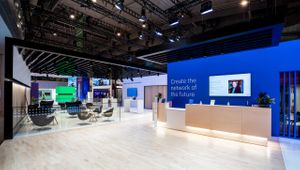
An Evening with Google's Flutter

Have you ever struggled with the idea of building a new and fascinating app that will save the world - should I build it for iOS or Android first? Maybe I should hire two dev teams that will write code for both platforms, hoping that the functionality will look and work the same? Consider those times a distant past, thanks to Flutter from Google.
What is Flutter?
Flutter is Google’s cross-platform mobile framework that lets you craft beautiful, high quality native apps for Android and iOS in no time! Just few days ago, Flutter 1.0 was officially released at Flutter Live 2018. Despite the fact the first stable release of Flutter was announced yesterday, it is currently used by big and small companies, indie developers and professional experts.
If companies like Alibaba, Groupon and Google itself are developing apps using Flutter, then you can be pretty sure that it’ll also be a good solution for you.
It’s open source, backed by a huge community that helps fix bugs and shape the direction of the framework, whilst provides thousands of plugins and what’s most important - it’s 100% free.
Work on Flutter started four years ago within Google and in 2015 the first version of Flutter known as 'Sky' was unveiled during Dart developer summit. For those who don’t know, Dart is a programming language originally developed by Google used for building web, server and mobile applications. During these four years, Flutter gained a lot of attention. Around 250 million people were using roughly 3000 apps built using flutter.
How does it affect the end product?
For end users, it doesn’t really matter if the app that they are using is built on Java, Swift or Flutter - it must work fast, be responsive, be easy to use and provide pleasing graphics visually. And the good news is that Flutter ticks all the boxes without any problems. It compiles to the native code making it fast both on Android and iPhone devices. For pixel-perfect graphics, Flutter has teamed up with Flare to provide a free tool that will dramatically speed up the development process.
Flare allows designers to work directly with assets that run in their final app or game with only a minimum setup done by developers. Every change that affects a design or animation can be easily amended and exported to an app, allowing an agile approach to developing mobile apps.
But it’s not only designers who will benefit from using Flutter. Google spent quite a lot of time analysing other languages, talking to dev communities and embracing the best practises from almost every other framework. This has created a great tool for developers that is not only fast and efficient, but also pleasurable to use.
One of the greatest features is ‘stateful hot reload’, which allows changes to be made whilst instantly showing the results without the need for restarting an app or losing its state. In surveys, developers say it makes their development cycle three times more productive, saving a lot of time and money. But that’s not everything. At Flutter Live 2018, cooperation with Nevercode was announced. This will provide access to Codemagic - a new continuous integration and delivery tool for mobile apps specifically designed for Flutter apps. It will not only speed up the deployment process but will also provide better insights, bug tracking and understanding for everyone involved in the project.
Will Flutter succeed where others have failed?
So, to wrap up, we’ve heard a lot of amazing news during Flutter Live 2018. Google also informed us that they are working on a version of Flutter that will be available for desktop, as well as embedded devices and new project called Hummingbird (which is basically Flutter for Web). Google is not the first company that has tried to provide a write-one-code-ship-to-many-platforms solution, but it has a clear idea of where it wants Flutter to be in the next two to three years.
It has great support from a large community and a clear strategy to compete with Microsoft’s Xamarin, which already has a very stable ecosystem with C# language. This allows applications to be written for mobile, web and desktop. We will definitely follow both companies during their projects and it will be interesting to see how Flutter will evolve and change the application development space in the upcoming years. The event inspired us so much that at GPJ, we started exploring how Flutter can help us to create brand experiences fueled by mobile moments.
Artur Fiedorowicz is tech lead at George P. Johnson UK













